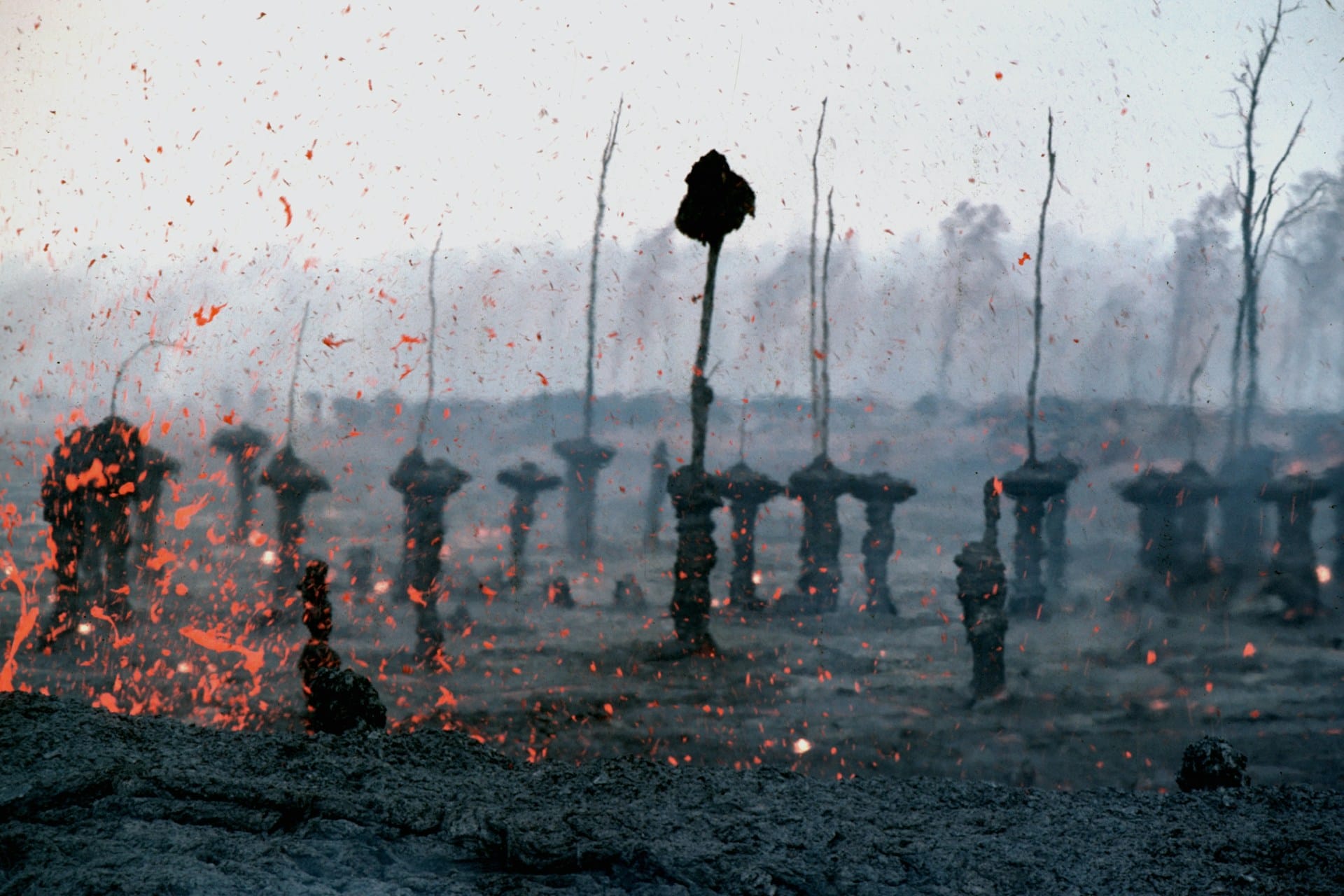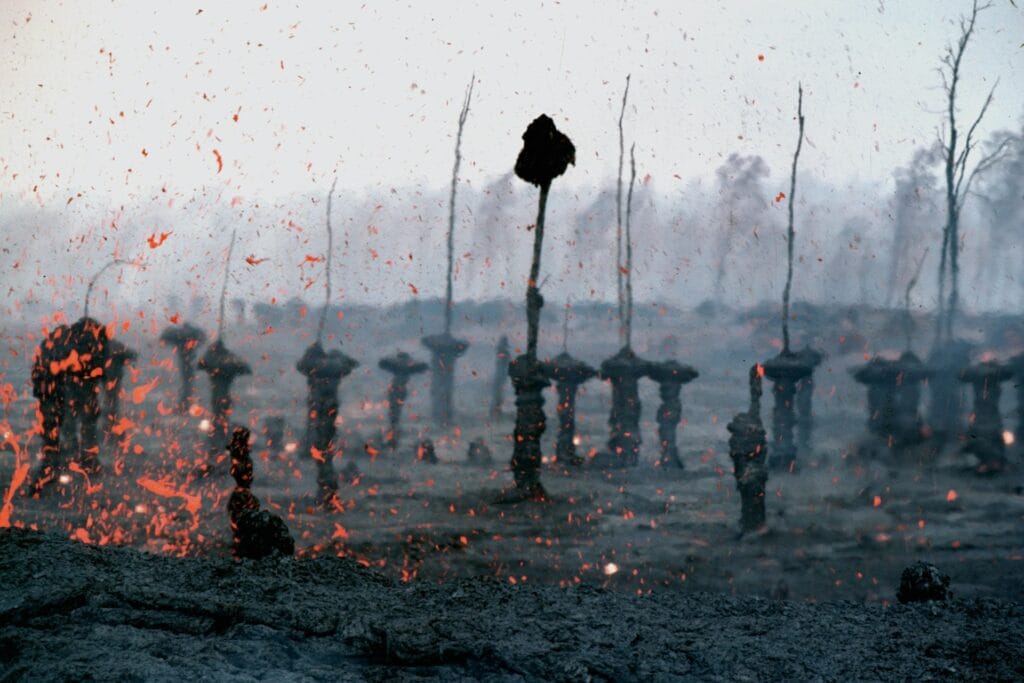
Photo by USGS on Unsplash

Mauna Loa, the world’s largest active volcano located on the Big Island of Hawaii, has been in the spotlight due to recent observations of its swelling summit. This phenomenon has sparked curiosity and concern among volcanologists and residents alike. Is this the prelude to another eruption? Let’s delve deeper into what is happening beneath this colossal volcano and explore the implications of these developments.
A Colossal Giant: Mauna Loa’s Volcano Significance
Mauna Loa is no ordinary volcano. Covering an area of approximately 5,271 square kilometers and rising about 13,681 feet above sea level (33,500 feet from its base on the ocean floor), Mauna Loa makes up more than half of the Big Island of Hawaii. Its vast dimensions and long history of eruptions make it a geological marvel and a critical study site for scientists.
Since its last eruption in November 2022, Mauna Loa has entered a period of relative quiet. However, its dynamics are far from static. Like all active volcanoes, it’s a breathing entity, responding to changes deep within the Earth.
The Recent volcano Signs: Swelling and Seismic Activity
In recent months, the U.S. Geological Survey (USGS) has reported minor inflation in Mauna Loa’s summit area. This swelling, or inflation, typically occurs when magma accumulates beneath the volcano, pushing against the surface and causing it to bulge.
Key Observations:
- Surface Deformation: GPS instruments and satellite data have detected subtle ground swelling at the summit and surrounding areas.
- Seismic Activity: An uptick in small-magnitude earthquakes (≤M1.5) near the summit, though not unusual, signals underground activity.
- Gas Emissions: While sulfur dioxide levels remain steady, changes could indicate shifting magma.
These signs suggest magma is refilling Mauna Loa’s reservoirs—a natural process that occurs between eruptions. While this doesn’t mean an eruption is imminent, it’s a clear indication that the volcano’s internal plumbing is active.
A Look at the 2022 volcano Eruption
Mauna Loa’s last eruption in November 2022 ended decades of dormancy, marking its first eruption since 1984. Lava flowed from fissures, reaching speeds of 18 miles per hour in some areas and capturing global attention. The eruption subsided in December 2022, leaving a scarred yet captivating landscape.
The eruption was relatively short-lived but underscored the need for continuous monitoring and preparedness. With its sheer size and potential to impact large areas, Mauna Loa’s eruptions are a stark reminder of nature’s power.
Why is Mauna Loa Swelling Now?
The current inflation at Mauna Loa’s summit raises intriguing questions. What’s happening beneath the surface, and what does it mean for the future? Here are some possibilities:
Magma Replenishment
Post-eruption, magma from deeper reservoirs often replenishes the shallower chambers emptied during the eruption. This process can take months or years, depending on the system’s dynamics.
Tectonic Stress
The Big Island of Hawaii sits atop a volcanic hotspot, where tectonic plates shift and magma rises to the surface. These movements can create pressure, causing swelling even without immediate eruptive activity.
Hydrothermal System Adjustments
Mauna Loa’s internal hydrothermal systems—channels of water and steam—may also contribute to observed deformations, though on a smaller scale compared to magma dynamics.
What’s the Risk?
It’s important to note that while the swelling is a cause for curiosity, it doesn’t necessarily spell imminent danger. Volcanoes like Mauna Loa have lengthy preparation periods before eruptive events.
Risk Factors to Monitor:
- Increased Earthquake Swarms: Clusters of larger earthquakes could indicate magma movement towards the surface.
- Rising Gas Emissions: Increased sulfur dioxide and carbon dioxide levels often precede eruptions.
- Accelerated Deformation: Faster swelling could signal an evolving eruption scenario.
At present, Mauna Loa’s behavior falls within expected post-eruption recovery patterns. Scientists emphasize there is no immediate cause for concern.
Living with the World’s Largest Volcano
Residents and visitors to the Big Island are accustomed to living in the shadow of Mauna Loa. Preparedness and awareness are key to coexisting with such a mighty natural force.
Community Efforts
- The Hawaii Volcanoes National Park provides education on volcanic hazards.
- Local authorities run drills to ensure readiness in case of eruptions.
- Continuous monitoring by the USGS keeps the public informed.
The Science of Prediction
Predicting volcanic eruptions is an art and a science. Using advanced tools like GPS, satellite imagery, and gas sensors, scientists can piece together the story unfolding deep beneath the surface.
Innovations in Volcanology
New technologies are enhancing our ability to predict and understand volcanic behavior. For example:
- Artificial Intelligence: Algorithms analyze vast datasets for early warning signs.
- Drones: Provide closer, safer access to volatile areas.
- Geophysical Imaging: Creates 3D maps of magma chambers.
While no prediction system is foolproof, these advancements improve safety and preparedness.
What Lies Ahead?
Mauna Loa’s swelling is a captivating reminder of the planet’s dynamic nature. Whether it leads to another eruption or simply reflects the volcano’s natural cycles, the ongoing activity offers scientists and the public a front-row seat to the incredible processes shaping our world.
For now, it’s a waiting game. Scientists will continue monitoring Mauna Loa closely, and Hawaiians will maintain their resilience and preparedness, living in harmony with this colossal giant.
For more information, visit Wikipedia
For Homepage, click here






